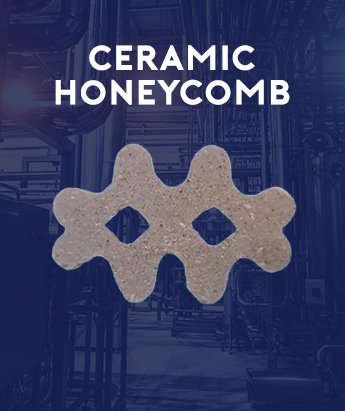
Ceramic Honeycomb
The main application for ceramic honeycomb heat media is regenerative afterburning - also known as regenerative thermal oxidation (RTO). RTO units are typically used by the pharmaceutical, chemical, paint, paper, wood processing, electronics and printed circuit board industries.Our Ceramic Honeycomb is used for many industrial applications like Heat Storage Media or Casting Filters. That enables us to contribute global environmental improvement.
Ceramic Honeycomb represents a pinnacle in material engineering, offering a unique combination of high heat resistance, structural strength, and versatility. As you navigate through our virtual space, delve into the exceptional properties that make ceramic honeycombs indispensable in applications ranging from catalytic converters in automotive systems to heat exchangers in industrial processes.ceramic honeycombs play a crucial role in enhancing performance and efficiency across various sectors.
Benefits of Ceramic Honeycomb
High Thermal Resistance: Ceramic honeycombs can withstand extreme temperatures, making them ideal for applications involving high heat environments.
Lightweight Yet Durable: Despite being lightweight, ceramic honeycombs provide exceptional durability and strength, ensuring long-lasting performance.
Excellent Thermal Insulation: They offer superior insulation properties, reducing energy loss and enhancing thermal efficiency in industrial processes.
Chemical and Corrosion Resistance: Ceramic honeycombs are resistant to chemicals and corrosion, making them suitable for harsh environments.
Porosity and Air Flow Control: The unique cellular structure allows controlled airflow, improving filtration and ventilation in various systems.
Applications of Ceramic Honeycomb
Catalyst Support Media: Used in chemical and petrochemical industries to support catalysts and improve reaction efficiency.
Heat Exchangers: Employed in heat exchangers to enhance heat transfer and maintain efficient thermal performance.
Filters and Separators: Utilized in filtration systems for gas and liquid purification, offering high levels of particulate removal.
Environmental Applications: Ideal for air and gas treatment, contributing to cleaner industrial processes and reduced emissions.
Aerospace and Automotive: Applied in exhaust systems, silencers, and thermal management solutions for improved performance and durability.
Why Choose SKJ Ceramic Honeycomb
Advanced Manufacturing Techniques: SKJ utilizes state-of-the-art technology to produce ceramic honeycomb structures with precision and durability.
Customization Options: We offer tailored solutions to meet specific industrial needs, ensuring optimal performance for any application.
Reliability and Performance: Our ceramic honeycombs are engineered to withstand harsh conditions while providing consistent and superior performance.
Sustainable Solutions: Designed to enhance energy efficiency and reduce environmental impact through innovative designs and eco-friendly materials.
Customer-Centric Approach: With a focus on customer satisfaction, SKJ Ceramic Honeycomb Manufacturer ensures complete support from design to implementation.
FAQ'S

